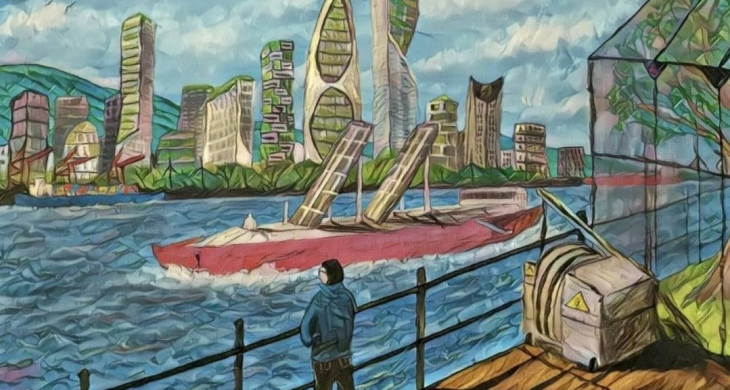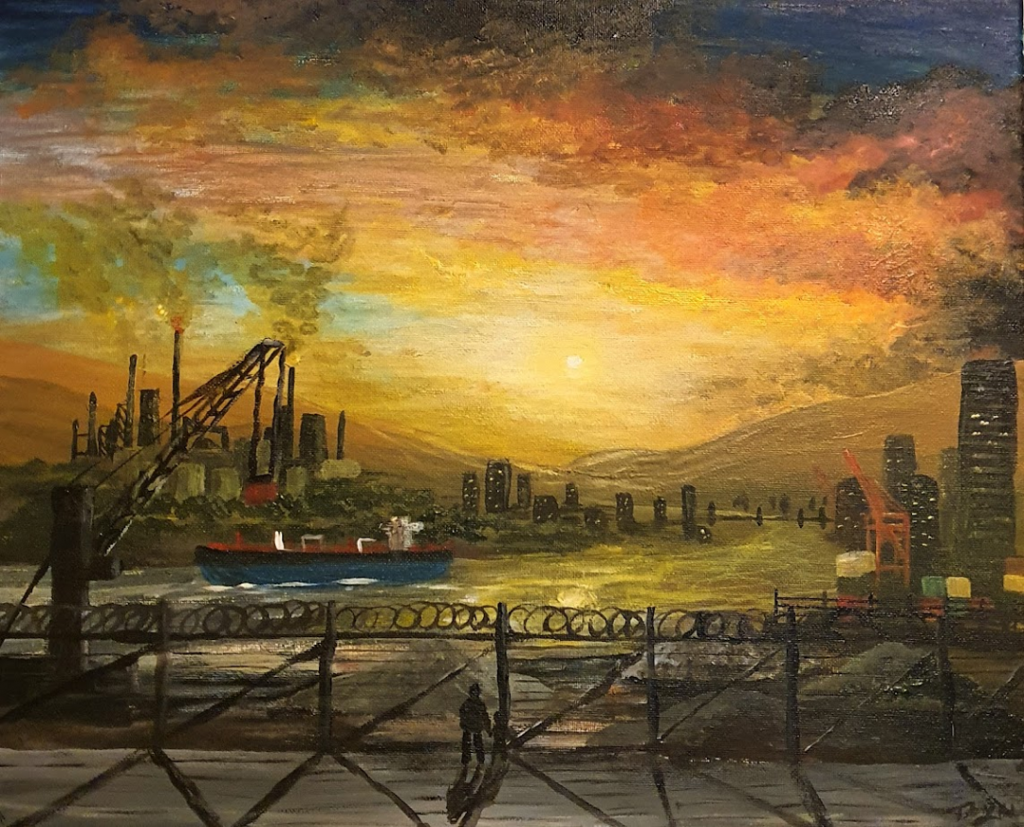Port-Cities: Past, Present & Future
Network News
Port-cities: Past, Present and Future
Using art to communicate research
Research and artwork by Toby Roberts, University of Southampton. Supervisors: Prof Ian Williams, Prof John Preston, University of Southampton and Nick Clarke, Ramboll.
The project booklet is available following the link below and was printed for the ‘Sustainable Infrastructure & Cities Conference’, held in Southampton on 24-26 May 2023, with funding from iPACT. It is hoped that this booklet will be useful in communicating the research with the general public and increase the impact of this research.
View online Booklet and Presentation
Introduction
Port-cities have a key role in international trade and provide essential services to the local, regional and national economies. Around 90% of all traded goods are shipped by sea. We all benefit from the existence of port-cities, even if we don’t live in one ourselves. Port-cities experience different challenges and opportunities when compared with inland cities, due to the presence of the port, which can create considerable negative impacts for the local people.
This project aims to present the research findings alongside art as a way of highlighted the key issues, increasing the impact of the research and making it more accessible to a new audience. The artwork has been funded by the EPSRC’s impact acceleration accounts and is presented within a booklet available by following the link above.
Past

Many of the challenges faced by port-cities exist due to the way ports and cities have grown together over time. Historically it has been useful for the port to be located as close to the city as possible. This brought many benefits, such as being closer to potential markets and customers, as well as providing workers and services. This led to ports and cities growing together and becoming inextricably linked over time, with the port influencing the local culture and identity. The modern port is often locked into its current city centre location due to this history. Large migrant communities brought by the port also helped shape the local identity. Port-cities develop a unique maritime heritage which makes them different to ordinary cities.
Present

The modern port-city creates considerable negative impacts for local people, whilst the benefits they create are enjoyed by everyone. We all rely on the goods and services created by ports, but not all of us have to live with the negative impacts this creates on a daily basis. The painting highlights the security fences, visual blight and environmental pollution created by the modern port.
In the modern port-city, the economic benefits are increasingly widely spread, as well as the employment created. A good example of this is Southampton, where many of the jobs supported by the port are located outside of the local area, such as 11,700 jobs in the automotive sector, nearly 200 km away in the west midlands. The local people have to experience considerable negative impacts, whilst having lost many of the benefits the port has provided for the city throughout history. The city has lost is connection to the benefits of the port, whilst becoming increasingly negatively impacted by the port’s activity, such as experiencing pollution and traffic congestion.
Future

Port-cities are ideally located as transportation hubs and hotbeds of industry to lead the transition to a more sustainable world. They can embrace sustainability whilst providing considerable social, economic and environmental benefits. Port-cities can introduce the circular economy, creating new industries and local employment, whilst making use of their location as centres of industry and waste material. This can reduce their environmental impact whilst creating economic and social benefits.
Port-cities can increase local social benefits by reconnecting the city with the port.
This can be achieved by increasing public access to the port such as via cycle paths or boat trips, and improving the perception of the port through maritime museums and places for the local population to learn about the port and its role in the local community, called port centres. Port-cities can also adopt renewable energy, helping to reduce environmental impacts and providing clean electricity for the local area.
